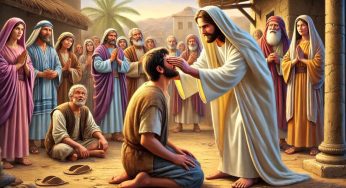Thorn Ville Church - From the earliest days of Christianity, miracles served as visible signs of divine authority and power.…
Thorn Ville Church - In the early years of the Christian church, Jerusalem was the center of teaching and fellowship.…
Thorn Ville Church - Among the many miracles recorded in the New Testament, the account of Ananias and Sapphira stands…
Thorn Ville Church - The story of Paul’s shipwreck is one of the most remarkable accounts in the Acts of…
Thorn Ville Church - A powerful moment unfolds one that echoes the spiritual authority of Jesus through the hands of…
Thorn Ville Church - The Acts of the Apostles in the New Testament are filled with compelling accounts of healing…

